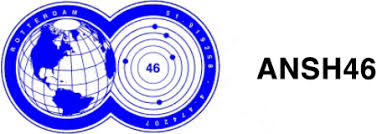What is a holding? Everything about holdings and employee participation
Have you ever heard of a holding but are not exactly sure what it is? A holding is a company that owns shares in other companies. It is a type of parent company that has control over subsidiaries. In this article, we explain what a holding is and how it relates to employee participation. Employee participation means that employees become co-owners of the company they work for. We will explore how holdings can assist with this.
Basic Concepts
What exactly is a holding? A holding is a company that does not produce its own products or provide services. Instead, a holding owns shares or stakes in other companies. There are different kinds of holdings. A personal holding belongs to one person, while a company holding belongs to a larger company. Holdings have many advantages. They can help spread risks and save on taxes. They also make it easier to manage companies.
Get your employee participation plan. Fixed price, arranged instantly.
- Transparent fixed price – no surprises afterwards
- Personalized plan, fully tailored to your company
- Ready-to-use Word or PDF template: buy once, use unlimited for all your employees
































































Holdings in the Context of Employee Participation
Employee participation is a way to make employees co-owners of the company. This can be done by giving them shares or certificates. Holdings can help with this process. Employees can place the shares or certificates they receive into a holding. This can provide tax advantages compared to personally owning the shares or certificates.
STAK (Foundation Administration Office)
A STAK is a special foundation that is often utilized in employee participation. STAK stands for Foundation Administration Office. A STAK manages the shares of a company and issues certificates to employees. These certificates grant rights to the value of the shares but not to voting rights. Sometimes employees choose to put the certificates into a personal holding.
Step-by-step Plan for Setting Up a Personal Holding
Do you want to set up a personal holding? Here is a step-by-step plan:
- Think carefully about whether a holding suits you.
- Talk to an accountant and a lawyer. They can advise you.
- Choose a name for your holding and make an appointment with a notary.
- Open a bank account for your holding.
It is important to organize everything properly, so you avoid problems in the future.
Pros and Cons
Using personal holdings for employee participation has advantages and disadvantages. Advantages include:
- Employees can save on taxes.
- Employees can manage multiple ownerships in one company.
Disadvantages include: - Setting up and managing a holding takes time and money.
- You must file tax returns for the holding.
It is essential to carefully consider whether the benefits outweigh the disadvantages.
Conclusion
We have learned what a holding is and how it can assist with employee participation. A holding can be a useful tool for businesses and employees. It can help spread risks and save on taxes. It also makes employee participation easier to arrange. However, it may not be the best solution for everyone. In the future, more companies and employees will likely use holdings for employee participation. It is an exciting development in the world of work and business.
Want to Know More?
Are you curious about holdings and employee participation? There is much more to learn. RoundE can assist you with more information on how this works in employee participation.
Which participation plan suits your company?
Request a free intake. In 30 minutes we discuss your needs and determine which plan suits your company.
Veelgestelde vragen
A holding is a company that owns shares in other companies. It is a type of parent company that has control over subsidiaries.
Employee participation means that employees become co-owners of the company they work for. This method is a way to make employees co-owners of a company by giving them shares or certificates.
A STAK is a special foundation that is often used for employee participation. STAK stands for Foundation Administration Office. A STAK manages the shares of a company and issues certificates to employees. These certificates give rights to the value of the shares, but not to voting rights. Sometimes employees choose to place the certificates in a personal holding.
A holding can save on taxes, employees can manage multiple ownerships in one company, and it can help with financial planning for the future.
Setting up and managing a holding takes time and money. You have to file tax returns for the holding.